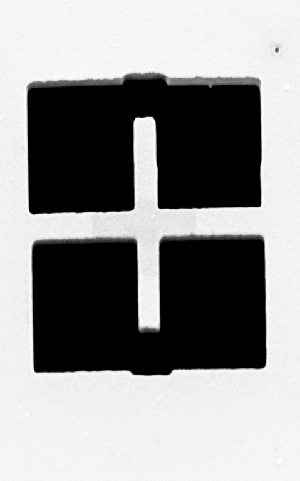 |
 |
Ultrafast Microscopy Group
|
Nonequilibrium Physics of Small Systems
|
 |
Nanomagnetism (statics and dynamics)
Nanomechanics
Surface physics
Experimental tools include: ultrafast magneto-optical Kerr
effect microscopy, nanomechanical torque magnetometry, and
scanning tunneling microscopy
Labs: CCIS L1-324, L2-320, L2-324; NINT 3-087
Ph: 780-492-4197 (lab) 780-641-1699 (NINT)
Student Office: CCIS 3 - 200

|
The principal research activity of the ultrafast microscopy group is the elucidation of magnetic phenomena at the nanoscale, through the development and application of advanced measurement techniques. For example, stroboscopic magneto-optical microscopy provides spatially-resolved observations of spin dynamics in ferromagnetic micro- and nanostructures on fundamental (picosecond) time scales.
At present (2011), our group is obsessed by opportunities at the intersection of nanomagnetism, nanomechanics, and nanophotonics. The fundamental time scales for mechanical dynamics are size-dependent, and for nanoscale structures these also push into the picosecond regime. Mechanical measurements have a storied, millennia-long history of being among the most sensitive in the scientist's arsenal. Photons in the near-infrared spectrum hold the record for detection of ultra-small mechanical displacements (despite their relatively long wavelengths).
|
Selected Publications
Background
It is our great fortune to have the opportunity to continue a grand
adventure which began at least 400 years ago, with the advent of the first optical microscopes. Robert Hooke, in his Micrographia (1665) outlined the philosophy of developing tools to augment our natural senses. Indeed his discussion still succinctly captures what experimental science is all about today. Remarkably, the reach of our sensory extensions now allow us even to "see" and "handle" individual atoms.
The core of our research focuses upon questions about magnetization
dynamics. This topic has seemingly endless richness, displaying
interesting phenomena across a broad range of spatiotemporal scales.
Some of the most exciting activity is in the
subnanosecond/submicrometer range, and continues to give rise both to
interesting new science and impressive advances in technology,
especially for magnetic data storage. (The cost per byte of storing
data is more than one hundred million times lower today than when I
first used a hard disk drive in 1984.) Experimental tools and methods have
also recently become available to carry this research to atomic scale.
The research in magnetism also provides the foundation upon which we
build complementary projects, exploiting instrumentation (lasers,
microscopes), nanofabrication processes, and other developments from
the core program. Our main complementary efforts today are in
nanomechanics and surface science.
Background Presentation
|
|
 |
 |
 |

|
 |
 |

